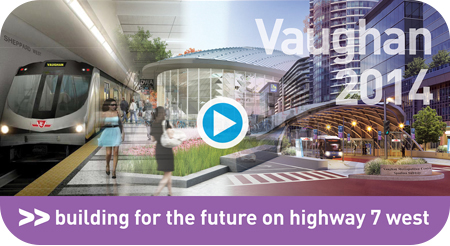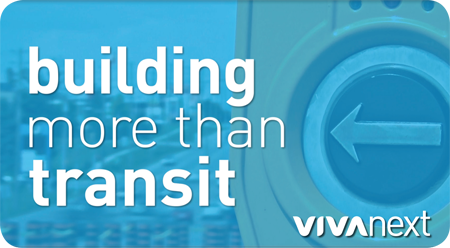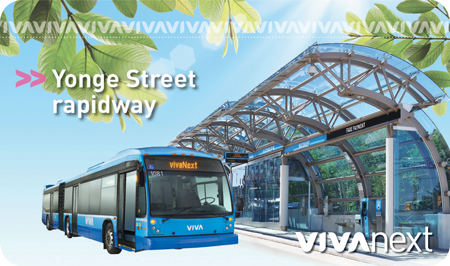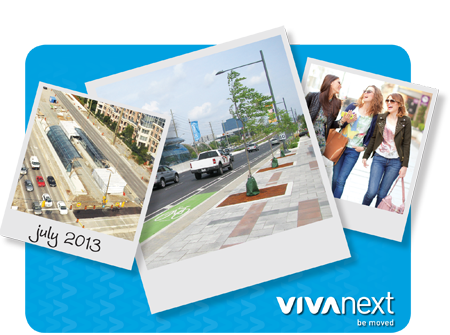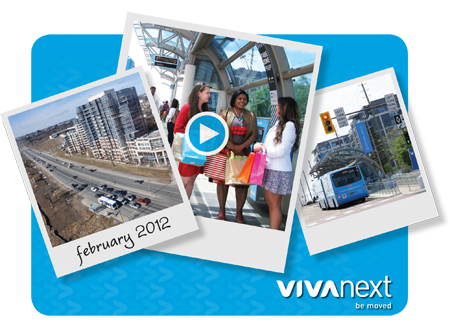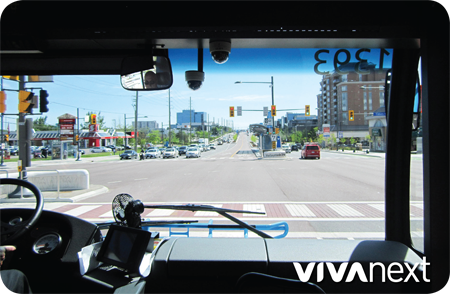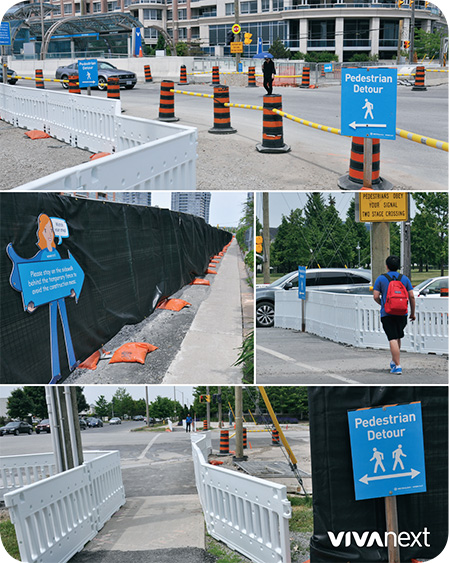we’ve been busy this year
Construction is well underway for the first phase of vivaNext rapidways in the City of Vaughan, and the transformation can be seen along Highway 7 West. Check out our latest video for an up-close look at the milestones we’ve accomplished this year. Although construction will continue throughout the winter months from Edgeley Boulevard to Bowes Road, here’s an update on the progress made in 2014:
- Traffic has been shifted east of Jane Street to its final configuration, so that work in the centre of the road [including platforms and canopies] can begin in 2015.
- As part of the 8-metre expansion of the Canadian National Railway [CN] MacMillan Bridge, we poured over 800 tonnes of concrete to create new columns and bridge pier caps.
- Underground infrastructure revitalization continues – utility, telecommunications and storm sewer relocation is approximately 80% completed.
- Road widening is completed and base-layer paving is 90% finished between Jane Street and the CN Bridge. Paving activities will continue in 2015.
- In order to preserve the existing Black Creek and Hillside Culverts, retaining walls were built. In total, five retaining walls have been completed along the corridor with a few more set to get started in 2015.
- Important traffic and pedestrian changes can be seen at several intersections. Motorists are benefiting from new turning movements and pedestrians now have two-stage crossings.
We know construction can be messy and disruptive at times, and we thank you for your patience and understanding as we continue the transformation. For up-to-date information on construction progress and activities, visit http://www.vivanext.com/hwy7progress.

